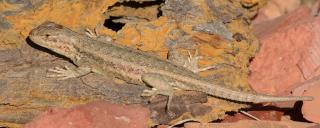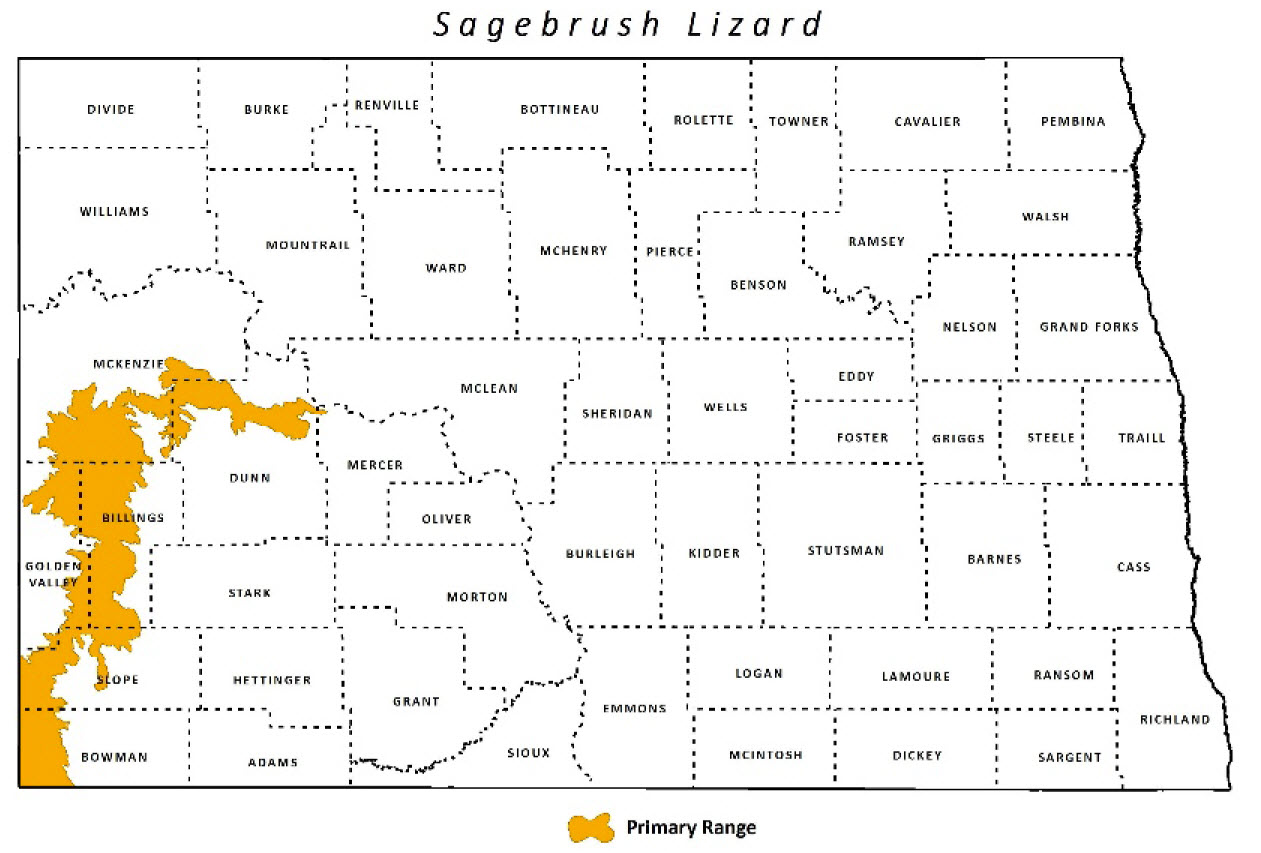

Sagebrush Lizard
| Scientific Name | Sceloporus graciosus |
|---|---|
| General Description | L 4-6”. This inconspicuous lizard is pale brown or green with four longitudinal rows of dark brown spots. Elongated blue patches on each side of belly are visible in most specimens. |
| Status | Year-round resident. |
| Abundance | Rare. |
| Primary Habitat | Sagebrush and rocky areas near water. |
| Federal Status | No federal status. |
| Reason for Designation | Listed as Imperiled in South Dakota, Vulnerable in Montana, and Critically Imperiled in Nebraska according to NatureServe. Once listed as a federal candidate species. |
Locations and Conditions of Key Habitat
Preferred Habitat
Sagebrush Lizards can be found in association with sagebrush, rocky areas near water, and adjacent areas of fine gravel, sandy, or rocky soil. Areas with boulders, forested slopes, and open flat land with rock crevices or mammal holes will also be used. Although somewhat docile, they will hide under rocks, twigs, or brush piles if alarmed and may occasionally climb trees or bushes. Feed on a variety of insects, spiders, ticks, mites, and aphids.
Key Areas and Conditions for Sagebrush Lizard in North Dakota
Known populations occur in the north unit of Theodore Roosevelt National Park and the badlands near Medora and southward.
Problems Which May Affect this Species
Habitat
Destruction and/or degradation of sagebrush habitat.
Other Natural or Manmade Factors
It is unknown what effect pesticides, development, and other disturbance has on populations of Sagebrush Lizards.
Research and Survey Efforts
Current Research or Surveys
- There is currently nothing specific to the species in North Dakota
Previous Research or Surveys
- University of North Dakota studied Climate Change and Land use Effects on Small Mammal Communities in a Northern Great Plans Landscape. This work included herptile surveys.
- Wheeler and Wheeler (1966) conducted a statewide survey of all amphibians and reptiles, as well as compiled existing records. The skinks were only found in the southeastern corner of the state.
- Hoberg and Gause (1992) recorded personal observations of prairie skinks in North Dakota.
- A compilation of all records in North Dakota by Jundt (2000) listed roughly 10 documentations of the Sagebrush Lizard in the state.
Additional Research or Surveys Needed
Future efforts could include visual encounter surveys as the most productive method for determining presence.
Management Recommendations
- Prevent overgrowth by shrubs and trees to maintain openness in sand habitats.
- Restrict off-road vehicle use to preselected, less sensitive/lower quality areas.
Monitoring Plans
Currently no monitoring is taking place. Possible monitoring options could include school classes/programs including universities, the general public through the NDGFD incidental reporting system, or national monitoring initiatives such as PARC. Monitoring should be directed at a number of herptile species.
2005-2015 Progress
The Sagebrush Lizard maintains a level III Species of Conservation Priority. More information is needed to understand the status of this species in North Dakota. Work toward a monitoring plan is needed.

Note: A listing of works consulted when compiling the information on this page may be found in the 2015 State Wildlife Action Plan.
